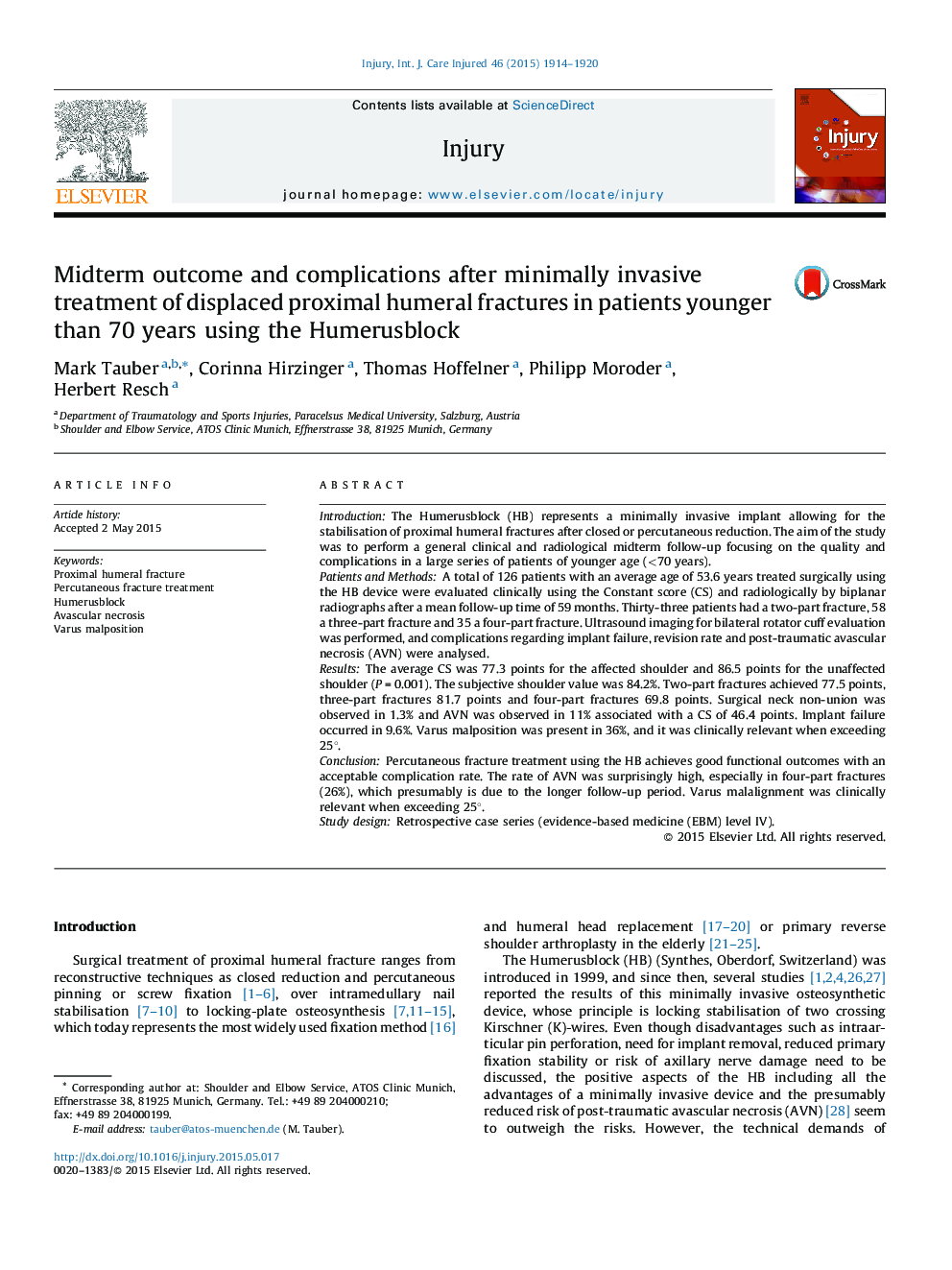| کد مقاله | کد نشریه | سال انتشار | مقاله انگلیسی | نسخه تمام متن |
|---|---|---|---|---|
| 6083091 | 1205987 | 2015 | 7 صفحه PDF | دانلود رایگان |

IntroductionThe Humerusblock (HB) represents a minimally invasive implant allowing for the stabilisation of proximal humeral fractures after closed or percutaneous reduction. The aim of the study was to perform a general clinical and radiological midterm follow-up focusing on the quality and complications in a large series of patients of younger age (<70 years).Patients and MethodsA total of 126 patients with an average age of 53.6 years treated surgically using the HB device were evaluated clinically using the Constant score (CS) and radiologically by biplanar radiographs after a mean follow-up time of 59 months. Thirty-three patients had a two-part fracture, 58 a three-part fracture and 35 a four-part fracture. Ultrasound imaging for bilateral rotator cuff evaluation was performed, and complications regarding implant failure, revision rate and post-traumatic avascular necrosis (AVN) were analysed.ResultsThe average CS was 77.3 points for the affected shoulder and 86.5 points for the unaffected shoulder (P = 0.001). The subjective shoulder value was 84.2%. Two-part fractures achieved 77.5 points, three-part fractures 81.7 points and four-part fractures 69.8 points. Surgical neck non-union was observed in 1.3% and AVN was observed in 11% associated with a CS of 46.4 points. Implant failure occurred in 9.6%. Varus malposition was present in 36%, and it was clinically relevant when exceeding 25°.ConclusionPercutaneous fracture treatment using the HB achieves good functional outcomes with an acceptable complication rate. The rate of AVN was surprisingly high, especially in four-part fractures (26%), which presumably is due to the longer follow-up period. Varus malalignment was clinically relevant when exceeding 25°.Study designRetrospective case series (evidence-based medicine (EBM) level IV).
Journal: Injury - Volume 46, Issue 10, October 2015, Pages 1914-1920